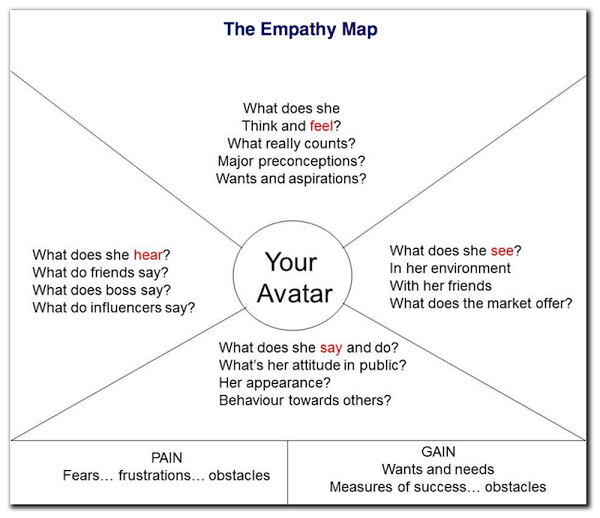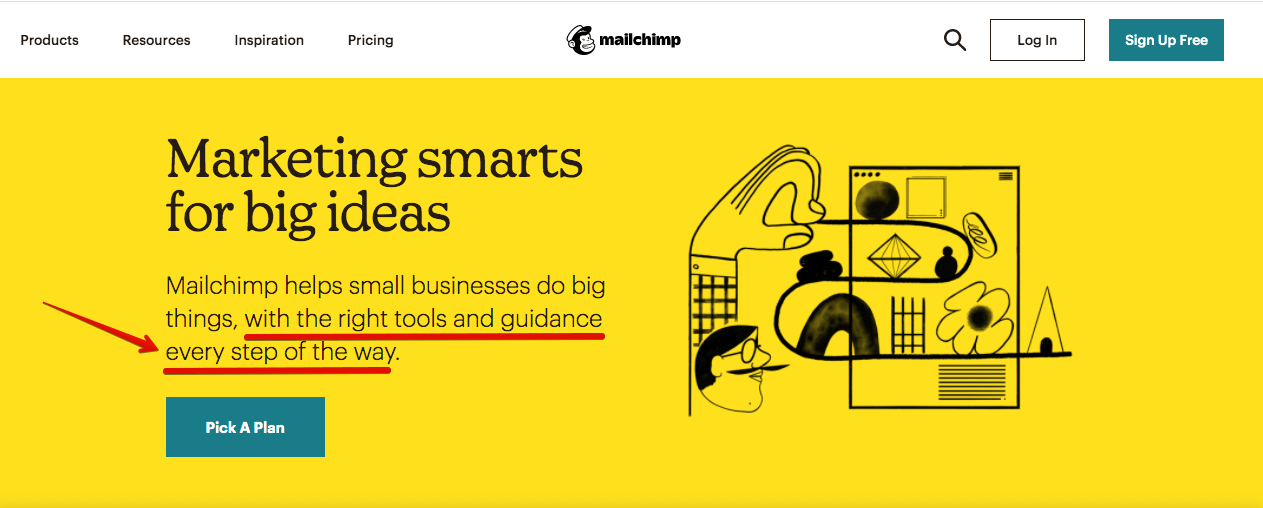
Introduction
What do you sell?
A product? A service? A software solution? An app?
Well, you don’t sell any of these. No business does.
The reality is every business (irrespective of its size, industry, and niche), sells only one thing- transformation.
You sell the transformation of your audience to become a better version of themselves.
The better you communicate that transformation, the better you sell.
And that’s what product messaging is- effectively communicating the value of a product or service and the difference it can make in their lives. Product message is the copy they see when they first land on your product page. And if it does not resonate with what they already have in mind, it fails in its purpose.
While it may seem simple, it’s not. Crafting a clear and cohesive message for your product is one of the biggest challenges a company faces. Because it’s not what you can copy from competitors, it’s not a form of creative writing, and it’s no guesswork at all.
As against all the points above, what matters most is that it’s relevant, speaks to your audience, and is unique to your business.
So how do you do that?
Here’s the 5 step process to creating a perfect product messaging. Stay till the end, because we will also discuss four essential factors that every product message must-have.
5 Step Process to Creating a Perfect Product Message to Lure Technology Buyers
1- Understand Your Audience
A- Create Persona
Here’s good news. You need not stress your brain muscles to brainstorm the message. It’s not you from where the stellar message comes. A perfect message comes from your audience.
The first step to understanding your audience is creating a persona.
90% of businesses that use personas could create a clearer understanding of their buyers and 82% of them could create an improved value proposition (we’ll come to it).

Source: science building buyer personas
In the case of technology buyers, committees take the buying decision. These committees are composed of members with unique perspectives. It’s imperative to understand your key decision-makers and influencers impacting their decision and create buyer persona accordingly.
B- Understanding Your Audience Really Well
While persona-building exercise helps to get you to some level, it’s still scratching the surface. With persona building exercise, you would be able to document their demographic details like age, gender, income, qualification, role in the company, etc. But you need to know them better, better than your spouse (well! That’s a misnomer. Isn’t it?) 😉
Two big questions you must know about your audience are-
– What is their pain point
– What motivates them
And to understand this, you need to know everything about them- their everyday life, what do they think and feel, what do they see, what do they say, their words, etc. And for this, we use empathy maps.

Source : Incomediary
So, when you’re crafting your product message, you’re talking about how your product can provide relief from their pain or how it can help them achieve what they want.
Understanding their real wants is not a simple one-step process. Consider it as multiple layers of reasons that you need to tap into.
If you’re in a B2B space, many methods like exploring Facebook groups, forums, etc won’t work because chances are your audience doesn’t spend much time on these platforms. Here are some of the methods you can use to understand your target audience well in the technology space-
- Conduct Surveys
- Interview your past customers
- Monitor your website analytics tofind which content they’re engaging with the most
Here are some more ways of doing research-

Source :Singlegrain
2- Where Are They In Their Buyer’s Journey?
What you say depends a lot on to whom you say it. The way you talk to a six-year-old is not the way you talk to your colleague or friend. You talk to a person according to his/her level of awareness. Right?
The same concept applies here. It was first introduced by Eugene Schwartz in his seminal work called Breakthrough Advertising (1966). In this book, he broke down the prospect’s awareness into five distinct parts-
A- Unaware: when the prospect is not aware of the problem
B- Problem aware: when the prospect has some idea about the problem but isn’t aware that a solution to this problem exists
C- Solution aware: in this case, your prospect knows that the solution exists
D- Product aware: your prospect knows what you sell but isn’t sure it’s right for him.
E- Most Aware: here, prospects know your product and want to buy from you.

The message for the same product for an unaware audience would be different from the message you would craft for an aware audience. Therefore, it’s imperative to find where your audience lies on this spectrum before crafting your message.
For example, if you’re crafting a message for a ‘most aware’ audience, keep in mind that they know what you offer and what they want. In this case, you don’t need a long sales page. All you need is the right trigger that motivates them to take action.
3- Benefits vs Features
You don’t buy an umbrella. You buy protection from the rain and sunlight. Right?
A feature is what your product or offer has, and a benefit is what that feature aims to accomplish.
While you can find a lot of content on the internet talking about the tussle between focusing on benefits vs features.
The fact is you need to mention both, especially if you’re talking to technology buyers. That boils down to the question: how does your audience make decisions?
Technology buyers are pragmatic decision-makers and focus on features, functions, price, ease of integration, etc. But at the same time, they also try to visualize the product in their current circumstance and look for trust elements.
Therefore, you need both.
Focusing on benefits and neglecting features won’t cut it. To craft an appealing message, lead with the benefit, and support your claim with feature details.
4- Craft Your Unique Value Proposition
A value proposition refers to the value a company promises to deliver to customers and why they should choose their product.
Now that you know all the factors to consider before crafting a message that would resonate with your audience the most, you’re ready to create your value proposition. A value proposition is a core component of your message. It can be really tricky coming up with a good value proposition. However, you can keep it simple by focusing on two main questions-
1- What value does it provide
2- Why you and not competitors
Once you have the answer to these two key questions, you’re good to put together your value proposition that’s unique, compelling and that resonates with your audience.
5- Where To Communicate?
Once you’re ready with your product message, you need to communicate in a way it is not lost or ignored.
Therefore, the best place to highlight your message is in the header section (aka above-the-fold area) of your product page. Above the fold area is that section of your webpage, which is visible without scrolling down.
In a study, it was found that people spend more than 80% of their time on the above-the-fold section.
Also, it’s the first point of interaction with your product. It’s imperative for you to keep it clear from the very beginning.
What Makes a Good Message?
Here are the four essential factors that every product message must-have-
1- Clarity
What’s better than clarity in business and in life? Nothing. Another thing is that your message has to be sticky and memorable. In the case of technology buyers, decision-makers and actual users can be different. So, for whom do you create your message?
2- Highlights differentiating factors
If you’re saying what everyone (including your competitor) is saying, then you aren’t saying anything at all. Even if you think you’re in a competitive niche and your product has been commoditized, there are multiple ways you can differentiate.
3- Use their language
What language do they speak- casual or formal? Directive or suggestive? Serious or humorous? What words do they use? How exactly do they describe your solution in their words?
For example,
Do they call it post-sunscreen moisturizer or after-sun moisturizer? The key to a message that resonates is using their words in the message.
4- Address Objections
Even though you have communicated your message well, chances are they have objections. Handling buyers’ objections well can get you a success rate of approx 64%. Try to overcome their biggest objection in the headline.

For example, the line ‘with the right tools and guidance every step of the way’ in Mailchimp’s message would help ease out any overwhelm or objections its prospects might have.
Wrapping Up-
Irrespective of your industry and niche, several companies compete for their share of the pie. In such a scenario, nailing your product message is the foundational step towards breaking the clutter and evoking the desirability of your product. So make sure you do it right. With the 5 steps mentioned above, you’ll be able to craft an appealing message that resonates with your audience.
Our blog
Latest blog posts
Tool and strategies modern teams need to help their companies grow.

B2B companies must generate leads that are ready to buy their products in order to me...

In the absence of a constant flow of leads, sales teams can't meet their targets and ...

Podcasts and webinars are powerful tools that marketers can use to reach new audience...



